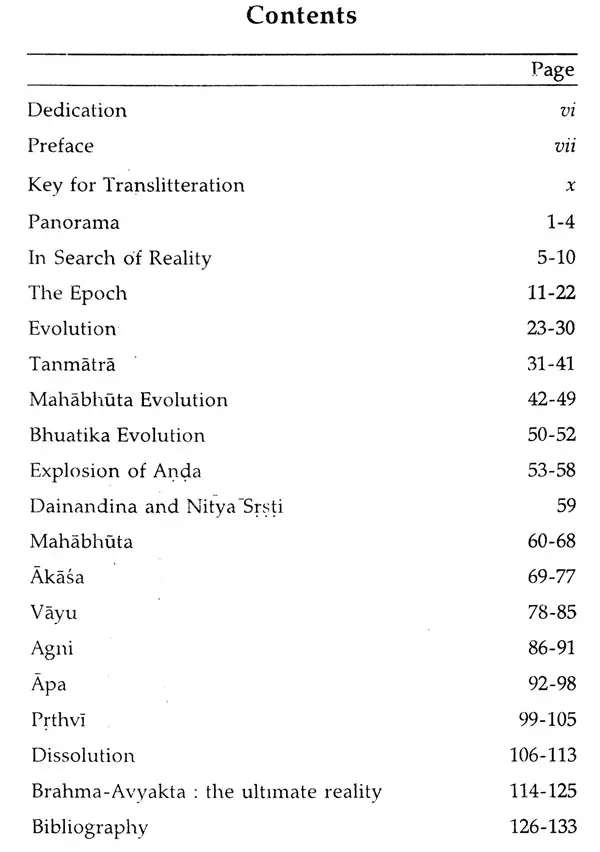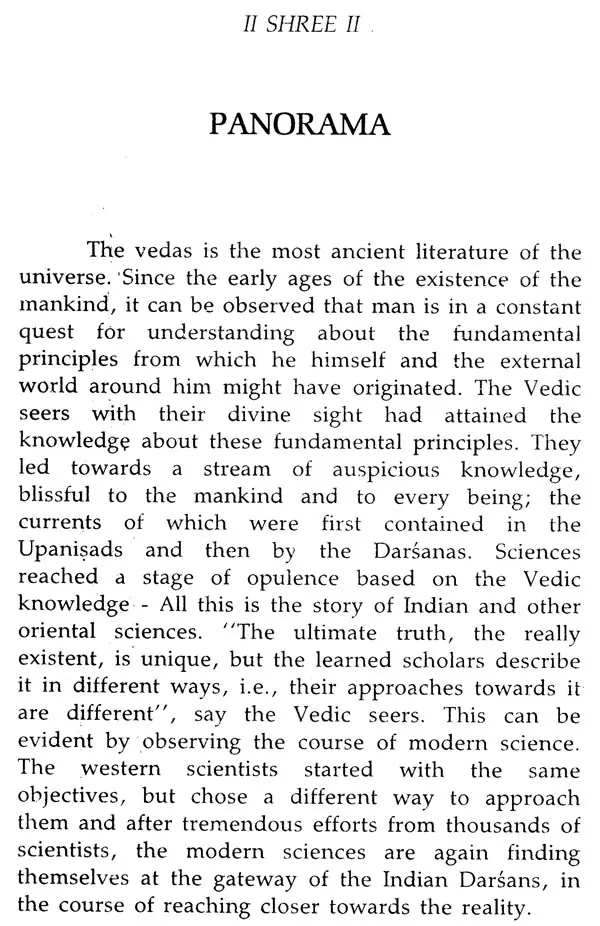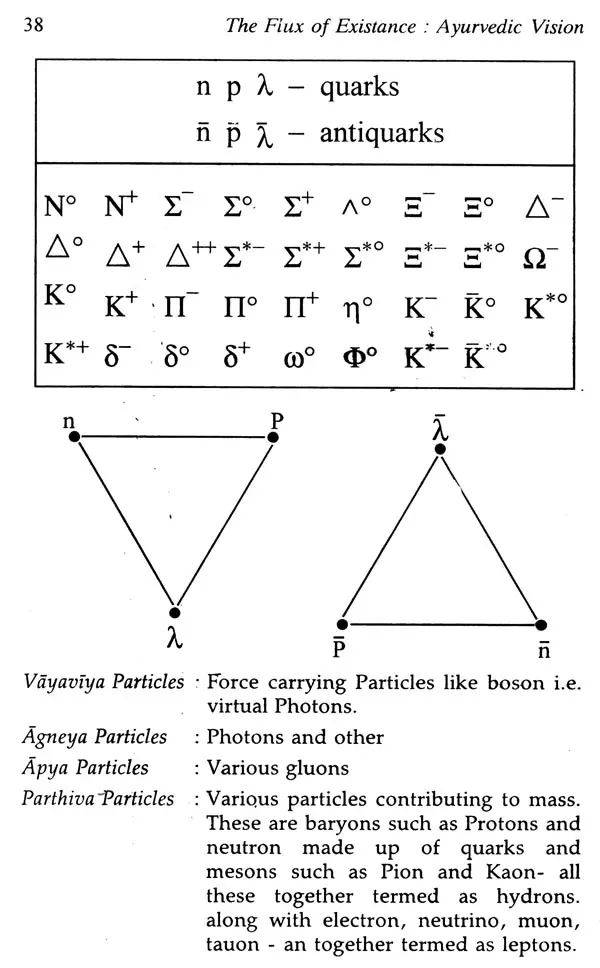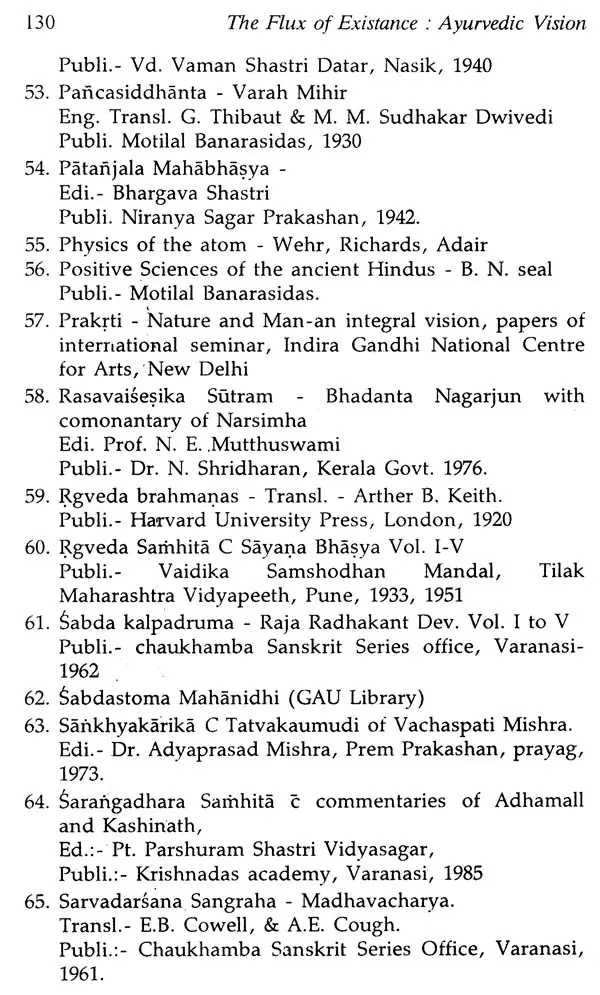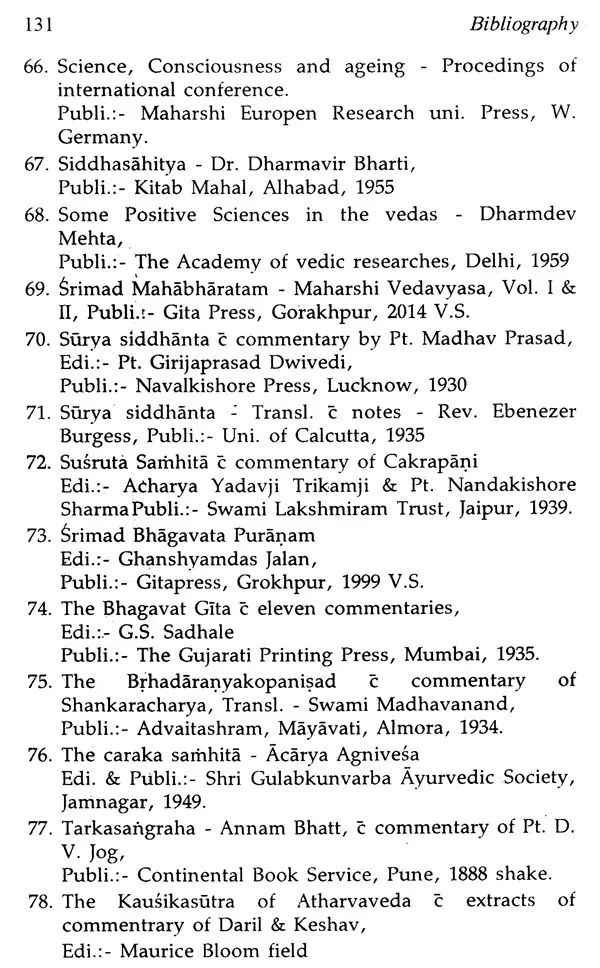
The Flux of Existance An Ayurvedic Vision (Study of Pancamahabhuta & Brahma-Avyakta)
Book Specification
| Item Code: | UAD297 |
| Author: | Vaidya Upendra Digambar Dixit |
| Publisher: | Publication Scheme, Jaipur |
| Language: | English |
| Edition: | 2002 |
| ISBN: | 8186782524 |
| Pages: | 142 |
| Cover: | HARDCOVER |
| Other Details | 9.00 X 6.00 inch |
| Weight | 280 gm |
Book Description
The book is expected to be a thought provoking pleasure for students, research workers and teachers of Ayurveda and also for all interested in oriental sciences.
He was selected to Institute with the postgraduate teaching and research in Ayurveda, Jamnagar and postgraduate in the subject basic principles - Since his postgraduate research on 'Fundamental concept of Panchamabhuta and its utility in Cikitsa he is working on this subject.
Through his doctoral research, on 'A critical evaluation of the contemporary research in the basic principles of Ayurveda he has contributed to the understanding of research methodology in Ayurveda, contemporary research and providing guidelines to future workers - He is teaching at present in the Gomantak Ayurveda Mahavidyalaya, Shiroda, and Goa. He has worked as examiner for undergraduates as well as for postgraduate level in Goa and Pune university in the basic principles of Ayurveda and since last three years.
He has delivered Many lectures for students, teachers and for society and many of his artides have appeared in Ayurvedic journals - presently he is also a member of state working committee of Ayurveda Uyasapeetha Maharashtra- Goa.
Ayurveda the most ancient medical science of the world, which is still in practice, is in the phase of renascence again and in the coming century there are all probabilities that it would be the global medicine, This endurance of this science is due to its sound basic principles which are precise, eternal, practically applicable and still holding the capacity to incorporate ultra modern trends. In the coming days of world wide acceptance to this science, it would be very crucial how we establish our basic principles, because unless this is done it may not be accepted as authentic by the scientific world.
Basic principles form base for all other branches of Ayurveda and as such the scholars in this subject hold a great responsibility. Our department is trying its best to fulfill this task, by hard work, innovative creative thinking, establishing a research laboratory in basic principles, first of this kind and by taking up various important projects.
Pancamahabhuta may be termed as the core of basic principles of Ayurveda and as such research works on this subject are most essential. The author has put in hard work to come out with almost 8000 references from ancient texts. It would be ridiculous to confine the concept of Pancamahabhuta to worldly objects like ether, air, fire, water and earth. The author therefore has selected a broad canvas to project the magnitude of these concepts, as for instance by comparing Marici Apa with plasma environments and Ambha with space plasma, Explanation about types of Vayu in the external world e.g. by comparing Pravaha Vayu with solar wind is yet another example of this.
Beginners are always confused about various apparently contradictory views expressed by various authorities. But the author has successfully tried to integrate these views in a comprehensive way. This becomes evident in the narration of the evolution where Maya and Brahma of Vedanta, Prakrti-purusa of Sankhya and Avyakta of Ayurveda all are proved to be modified names of the same principles. This approach is significant to comprehend the truth and in accordance with the famous Anekantavada, accepted by the worshipful Atreya.
I wish to the efforts of the author a grand success and expect many more scholars to come forward and try to contribute to the advancement of This great science Ayurveda.
Late Vaidya Atmararn Shastri Datar, Sangli (Maharashtra) devoted his ascetic life to expound the concept of Pancamahabhuta and initiated Pancabhautika Cikitsa. Inspired by him I decided to take up Pancamahabhuta as the topic for my postgraduate research. Blessings of Late Vaidyacudamani M.V. Kolhatkar sir were always a great boost.
In the course of work I compiled more than 8000 references about the fundamental concept of Pancamahabhuta from thorough study of the Rgveda with Sayanabhasya, Yajurveda with commentaries of Muvvata and Mahidhara and Atharvaveda with Savanabhasya. Eleven major upanisads with commentary of Sankaracarya and 223 other Upanisads were also referred, followed by some important Puranas and major texts of Darsans with commentaries and three great texts of Ayurveda, supplemented with several other books.
After this study it was revealed that although apparently dissident views are expressed by various scholars of Darsana, they account only for differences in the style of expression, fundamentally there are no disputes and they all are talking about the same under hidden reality. Ayurveda guides therefore to integrate thoughts of all of them and a comprehensive view can be developed. This was the main aim of this book. It is also confirmed that views of modern sciences like space physics, atomic physics, quantum physics support such comprehensive views. Such confluences are also mentioned at places in this book.
The author has also tried to develop experimental designs and clinical studies through which practical applicability of these concept can be established, but being out of scope this is not included in the present book. ‘
Almost each line from this book is based on many original references and those interested can contact in this regard.
This book has been materialized by the virtue of able guidance provided to me at my postgraduate studies by revered Prof. Dr. R. B. Dwivedi, head, Dept. of Basic Principles. IPGT & RA, Jamnagar.
Book's Contents and Sample Pages
